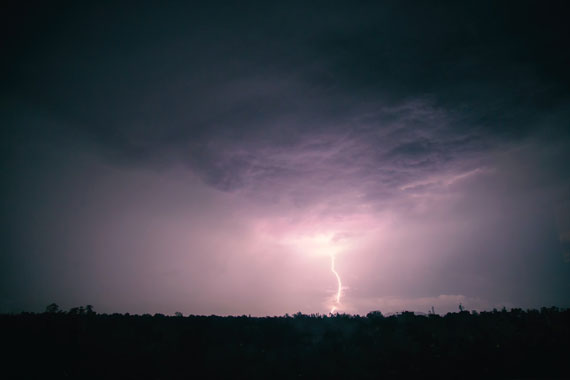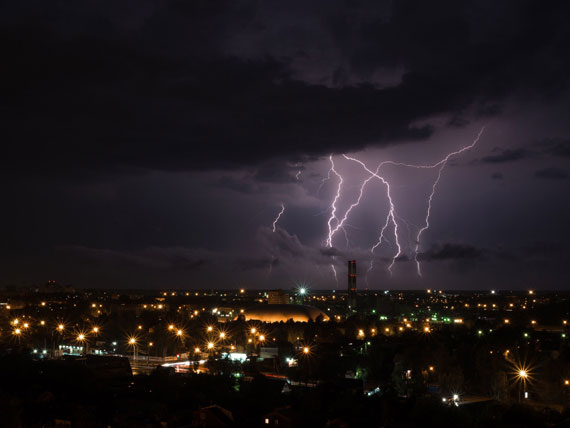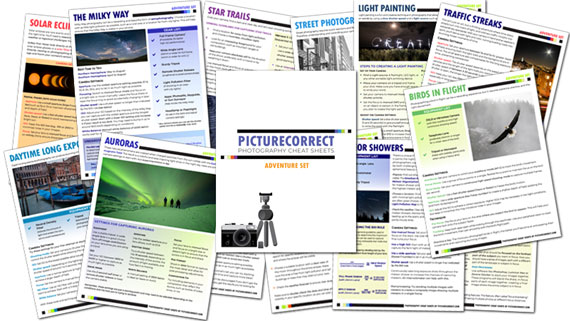Capturing the raw power and beauty of a lightning strike is a dream for many photographers. However, the unpredictability and speed of lightning make it a challenging subject. Enter lightning triggers: devices designed to help photographers capture these fleeting moments. In this blog post, we’ll delve deep into how lightning triggers work and provide tips for using them effectively.
Relevant note: for a lightning photography cheat sheet and more difficult rare weather situations, you may want to check out this summer sale wrapping up soon on the popular Photography Adventure Cheat Sheets at 80% Off

Photo captured by Dan Aragón
1. What is a Lightning Trigger?
A lightning trigger is a device that detects a lightning strike’s initial flash and instantly triggers a camera’s shutter. This allows photographers to capture lightning with precision, without relying on luck or continuous shooting.
2. How Does a Lightning Trigger Work?
a. Detection Mechanism:
Most lightning triggers use an infrared (IR) or visible light sensor. When a sudden increase in light intensity is detected (indicative of a lightning strike), the device sends a signal to the camera to take a picture.
b. Response Time:
The key to a good lightning trigger is its response time. Lightning strikes are over in a matter of milliseconds, so the trigger needs to be fast. High-quality triggers can respond in less than a millisecond.
c. Sensitivity Adjustment:
Some triggers allow users to adjust sensitivity. This is useful in varying lighting conditions. For instance, during the day, a trigger might need to be more sensitive than at night.
3. Using a Lightning Trigger Effectively
a. Mount on a Tripod:
Given the long exposure times often required for lightning photography, it’s essential to have a stable setup. A tripod ensures that your camera remains steady, preventing blurry images.
b. Manual Focus:
Autofocus can struggle in low light conditions or with distant subjects like lightning. Set your lens to manual focus and focus on a distant object to ensure clarity.
c. Camera Settings:
- Aperture: A mid-range aperture (f/8 to f/11) is often ideal. It provides a good depth of field and sharpness.
- Shutter Speed: If you’re not using a trigger, long exposures at night (e.g., 10-30 seconds) can work, where you are essentially trying to get lucky. With a trigger, you can use shorter exposures, like 1/4 second up to 2 seconds, since the trigger will capture the lightning instantly.
- ISO: Keep it low (e.g., 100 or 200) to reduce noise.
d. Positioning:
Safety first! Stay inside a vehicle or a safe structure. Position your camera to have a wide view of the sky, anticipating where lightning might strike.
e. Test the Trigger:
Before the storm arrives, test your trigger to ensure it’s working and that your camera settings are correct.

Photo captured by Natalya Letunova
4. Limitations and Considerations
a. Day vs. Night:
Lightning triggers can be more effective at night when a lightning strike provides a significant contrast against the dark sky. During the day, the sensitivity might need adjustment.
b. False Triggers:
Sudden changes in light, like car headlights or other flashes, can cause the trigger to activate. It’s essential to be aware of your surroundings.
c. Battery Life:
Using a lightning trigger can drain both the trigger’s and the camera’s batteries faster. Always have spare batteries on hand.
Conclusion
Lightning triggers are invaluable tools for photographers looking to capture the majesty of a storm. While they can significantly increase the chances of getting that perfect shot, it’s essential to understand their workings and limitations. With the right equipment, settings, and safety precautions, you’ll be well on your way to capturing nature’s spectacular light show.
For Further Training:
For help remembering the camera settings for difficult situations like this, a set of Photography Adventure Cheat Sheets are designed to help. They are currently 80% off for a Summer Sale which ends soon if you want to check them out.
The perfect companion for any photographer. Print one out whenever you need it. Whether you’re going on vacation or seeking out a specific photography adventure, these cheat sheets can provide you with the knowledge and inspiration you need to create your best work yet.
Only a few days left: The Photography Adventure Cheat Sheets Summer Sale
Like This Article?
Don't Miss The Next One!
Join over 100,000 photographers of all experience levels who receive our free photography tips and articles to stay current:







Leave a Reply